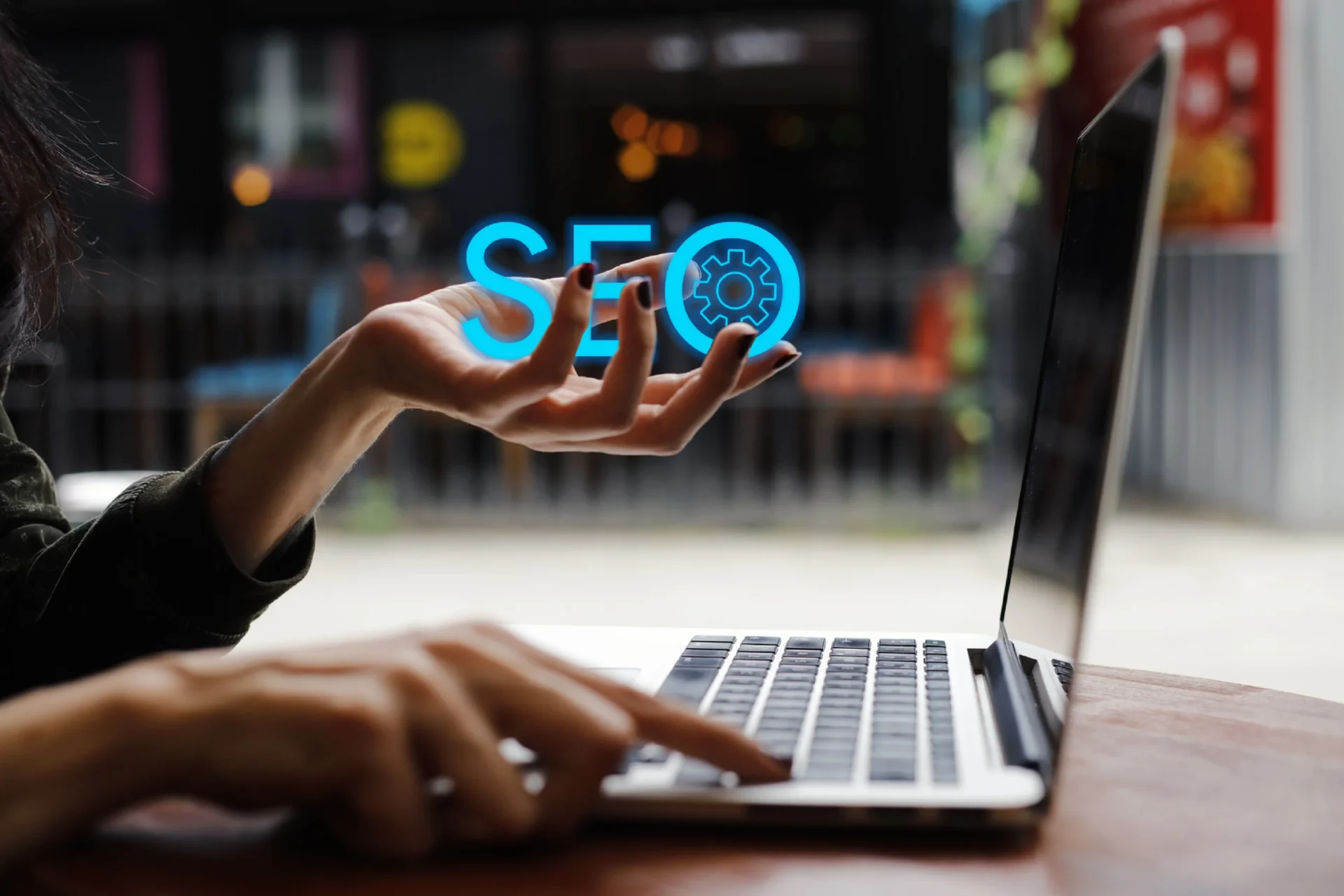In an era where milliseconds matter, website speed has become a critical factor for SEO success. It’s not just about user experience (although that’s incredibly important too!) but also about how search engines like Google perceive your website.
Let’s face it, nobody enjoys waiting for a website to load. Every second a website takes to load translates to a user’s dwindling patience and potential bounce, meaning they leave your site and head straight to your competitor’s. This not only hurts your user experience but also sends negative signals to search engines.
But wait, there’s more to the story! Google itself has publicly acknowledged that page speed is a factor it considers when ranking websites. This means that a slow website is not only frustrating for users but can also hinder your search engine optimization (SEO) efforts.
Here at fishbat, we understand the importance of a user-centric approach to SEO. Which is why, in this comprehensive guide, we’ll delve into the fascinating world of website speed and SEO, exploring how they work together to propel your website to the top of search engine results pages (SERPs).
Why Page Speed Matters for SEO
So, why is page speed such a big deal for search engine optimization (SEO)? Well, it all comes down to a simple equation: faster websites equal happier users, and happier users equal better search engine rankings. Google, the search engine giant, has made it crystal clear that website speed is a ranking factor. This means that if your website is slow, it’s going to be harder for you to rank well in search results.
Let’s break it down. When your website takes forever to load, users get frustrated and bounce off to find information elsewhere. This high bounce rate sends a red flag to Google, indicating that your content might not be relevant or valuable. On the other hand, a fast-loading website keeps users engaged, encourages them to explore your site further, and ultimately increases the chances of conversions.
But the benefits don’t stop there. Google’s search algorithms are constantly evolving, and one of their main goals is to provide users with the best possible search experience. By prioritizing fast-loading websites, Google ensures that users are satisfied with their search results. And when users are happy, Google is happy –– and that’s good news for you!
Key Factors Affecting Website Speed
In our previous blog, we laid down the factors involved in creating a successful website, and one of them is page speed. Understanding the culprits behind a slow website is the first step to SEO website speed optimization. Several key factors can significantly impact your website’s speed, and it’s essential to identify and address them to achieve optimal performance.
One of the biggest culprits is image size and format. Images can be resource-hungry, and if not optimized correctly, they can slow down your website considerably. That’s why it’s crucial for your website design to compress images without compromising quality. Additionally, choosing the right image format, such as JPEG or PNG, can make a significant difference.
Another factor that can impact website speed is the structure and complexity of your HTML, CSS, and JavaScript code. Bloated code can slow down rendering, so it’s essential to minify and compress these files. Removing unnecessary code and optimizing the structure can significantly improve load times.
Server response time also plays a vital role in website speed. A slow server can delay the delivery of your website’s content, leading to a frustrating user experience. Factors like server load, hardware, software, and network infrastructure can all affect server response time.
Lastly, the number of HTTP requests your website makes can impact its speed. Each request to the server adds latency, so reducing the number of requests can lead to faster load times. Combining CSS and JavaScript files, using image sprites, and optimizing fonts can help reduce the number of HTTP requests.

How to Measure Your Website’s Speed
Understanding how to measure your website’s speed is crucial for identifying areas that need improvement. There are several tools and metrics available to help you assess your website’s performance.
One of the most popular tools is Google’s PageSpeed Insights. This free tool provides valuable insights into your website’s speed, offering suggestions for improvement. It measures key metrics like First Contentful Paint (FCP) and DOM Content Loaded (DCL), which indicate how quickly content starts appearing on the page.
Another helpful tool is WebPageTest.org. It allows you to simulate different network conditions and browsers, providing a more comprehensive view of your website’s performance. Web Page Test offers detailed reports, including waterfall charts, that help you identify specific performance bottlenecks.
Beyond these tools, it’s essential to track key performance indicators (KPIs) to measure the impact of your optimization efforts. Metrics like page load time, bounce rate, and conversion rate can provide valuable insights into your website’s overall performance.
Optimizing Images for Speed
Images can be a significant contributor to slow website load times. However, with proper optimization, you can dramatically improve your website’s performance without sacrificing image quality. In return, your SEO will be optimized and you will get good signals from search engines.
One of the most effective ways to optimize images is by choosing the right file format. JPEGs are generally best for photographs due to their ability to compress images without noticeable quality loss. On the other hand, PNGs are better suited for graphics with sharp edges and transparent backgrounds. For animated images, GIFs are still commonly used, but keep in mind that they can be large file sizes.
Resizing images to the exact dimensions required for your website is another crucial step. Uploading large images and relying on your website to resize them can significantly impact load times. By resizing images beforehand, you can reduce file size and improve performance.
Compression is key when it comes to image optimization. There are various tools and techniques available to compress images without compromising quality. Online tools like TinyPNG and Squoosh offer easy-to-use compression options. Additionally, many image editing software programs have built-in compression features.
Another important aspect of image optimization is lazy loading. This technique postpones the loading of images until they are about to appear on the screen. This can significantly improve initial page load times, especially for long pages with multiple images. We recommend incorporating this into your on-page SEO strategy.
The Role of Caching in Website Speed
Caching is a powerful technique that can significantly improve page speed SEO performance. It involves storing frequently accessed data in a temporary storage area, reducing the need to fetch it from the original source every time.
There are three main types of caching: browser caching, server-side caching, and content delivery network (CDN) caching.
- Browser caching stores static assets like images, CSS, and JavaScript files on the user’s device. This allows the browser to reuse these files for subsequent visits, reducing load times.
- Server-side caching stores dynamic content, such as database queries, in a temporary storage area. This reduces the load on the server and speeds up page delivery.
- CDN caching utilizes a network of servers distributed geographically to store copies of your website’s content. This brings content closer to users, reducing latency and improving load times.
By effectively implementing caching strategies, you can significantly reduce server load, improve website responsiveness, and enhance user experience.
Mobile Optimization for Speed
With the increasing number of users accessing the internet through their smartphones and tablets, it’s essential to ensure a rapid and seamless experience. On top of that, a mobile-responsive website is beneficial for SEO. In fact, mobile adaptability is a ranking factor.
One of the fundamental aspects of mobile optimization is responsive design. This approach allows your website to adapt to different screen sizes, providing an optimal viewing experience for users on any device. By implementing responsive design, you can avoid the need for separate mobile and desktop websites, streamlining your website’s structure and improving load times.
Another critical factor is minimizing the size of your website’s resources. Mobile devices often have slower internet connections compared to desktop computers. Therefore, it’s essential to reduce the size of images, CSS, and JavaScript files to ensure faster load times.
Additionally, prioritizing above-the-fold content can significantly improve mobile page speed. Users on mobile devices typically have smaller screens, so it’s important to load essential content quickly. By focusing on the most critical elements above the fold, you can provide a better user experience and improve overall performance.
Tracking and Measuring Page Speed Improvements
To effectively measure the impact of your page speed optimization efforts, it’s essential to track the right metrics and establish clear benchmarks. By monitoring these metrics over time, you can assess the effectiveness of your strategies and identify areas for further improvement.
Google Analytics is a powerful tool for tracking website performance and provides valuable insights into page speed. The Behavior tab in Google Analytics offers data on site speed, allowing you to analyze average page load time and identify slow-loading pages.
Additionally, Google Search Console provides information about how search engines see your website. You can access data on Core Web Vitals, which are a set of metrics that Google uses to assess user experience.
Beyond these tools, there are other metrics to consider, such as bounce rate, time on page, and conversion rate. By tracking these metrics alongside page speed improvements, you can correlate changes in user behavior with website performance.
Ready to Rev Up Your Website?
Optimizing website speed is a critical component of a successful SEO strategy. By understanding the factors that impact page speed and implementing effective optimization techniques, you can enhance user experience, improve search engine rankings, and drive business growth. If you are interested in knowing more about SEO ranking factors and how to ace them, we recently published a detailed step-by-step guide on how to create a successful SEO strategy in 2024.
At fishbat Digital Marketing Agency, we have a proven track record of helping businesses achieve their online goals through comprehensive SEO and website optimization services. Our team of experts can assess your website’s performance, identify areas for improvement, and implement strategies to boost your search engine rankings and drive conversions.
If you’re looking to elevate your website’s performance and gain a competitive edge, contact us today at 855-347-4228 or hello@fishbat.com for a free consultation. Let us help you unlock the power of page speed and achieve your online success.
Remember, a fast-loading website is not just a technical requirement; it’s a strategic investment in your business’s future.


